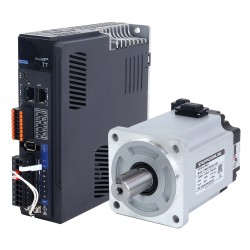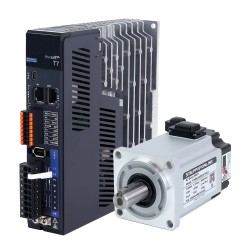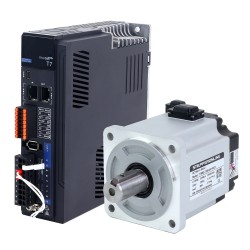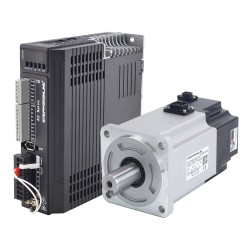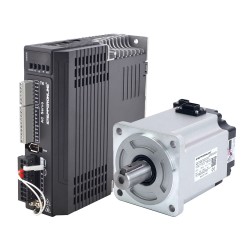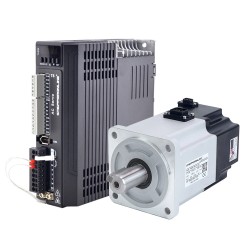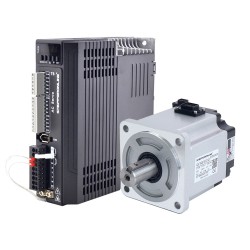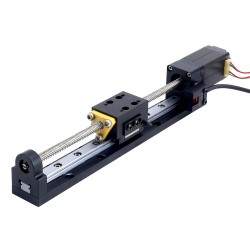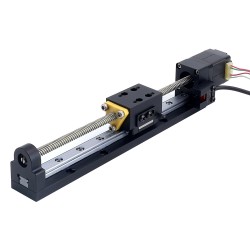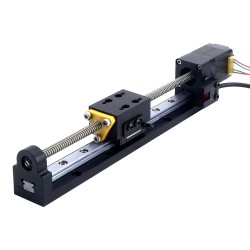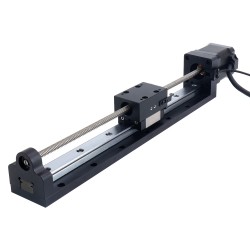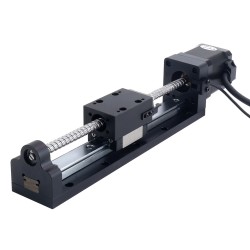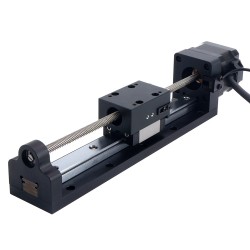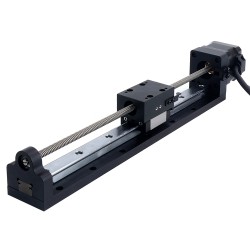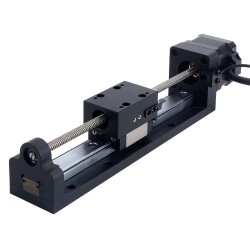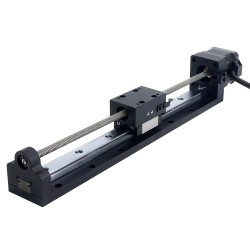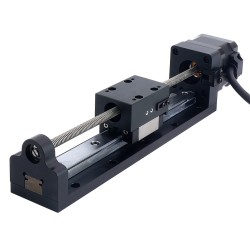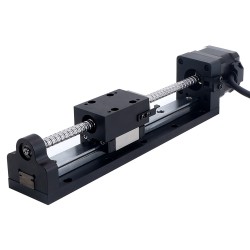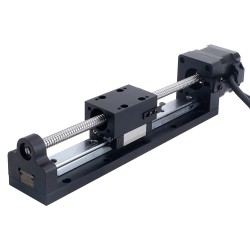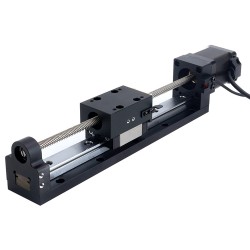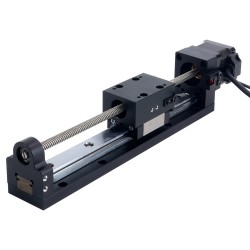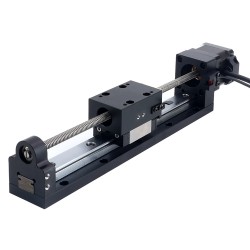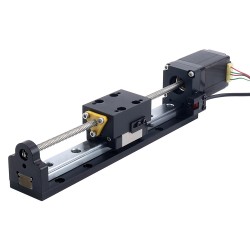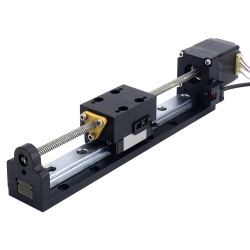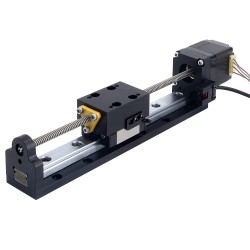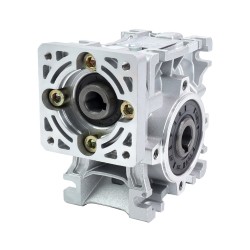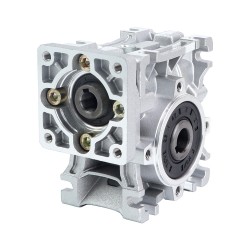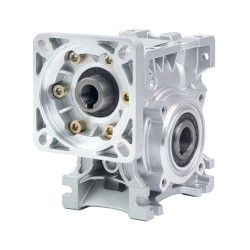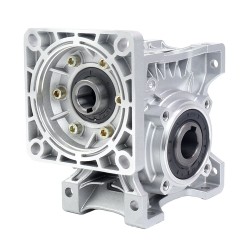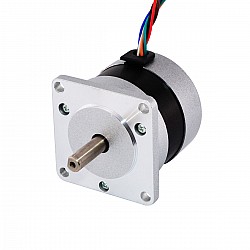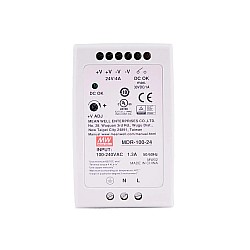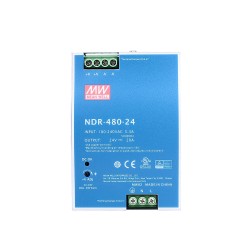Overview
A 24V power supply is a device that converts alternating current (AC) from a wall outlet or other source into a direct current (DC) voltage of 24 volts. These power supplies are widely used in various industries and applications that require a stable and reliable source of 24V DC power. Some common applications include industrial automation, robotics, HVAC systems, LED lighting, security systems, and many others.
What is a 24V Power Supply?
A 24V power supply is an electrical device that converts alternating current (AC) from a wall outlet or other source into a direct current (DC) voltage of 24 volts. It is designed to provide a stable and reliable source of power for a wide range of applications that require a constant voltage of 24V DC.
These power supplies typically consist of several main components: an input rectifier, a filter circuit, a voltage regulator, and various protection circuits. The input rectifier converts the AC input voltage into a pulsating DC voltage, which is then smoothed by the filter circuit. The voltage regulator ensures that the output voltage remains constant at 24V, even if the input voltage or load conditions vary. Finally, the protection circuits safeguard the power supply and connected devices from potential hazards such as overvoltage, overcurrent, and overheating.
24V power supplies are available in various form factors, power ratings, and configurations. They can be designed for desktop use, rack mounting, or integration into larger systems. Some power supplies are enclosed in a metal or plastic case, while others are open-frame designs intended for installation within larger enclosures or equipment.
How Does a 24V Power Supply Work?
A 24V power supply works by converting alternating current (AC) from a wall outlet or other source into a direct current (DC) voltage of 24 volts. This conversion process involves several stages:
- Input Rectification: The first stage is the input rectifier, which converts the AC input voltage into a pulsating DC voltage. This is typically accomplished using a diode bridge rectifier circuit, which allows current to flow in only one direction.
- Filtering: The pulsating DC voltage from the rectifier is then smoothed by a filter circuit, typically consisting of large capacitors and sometimes additional inductors. This filtering process removes the remaining AC ripple and produces a relatively smooth DC voltage.
- Voltage Regulation: The filtered DC voltage is then fed into a voltage regulator circuit, which ensures that the output voltage remains constant at 24V, regardless of fluctuations in the input voltage or changes in the load current. Common voltage regulator designs include linear regulators, switching regulators, or a combination of both.
- Protection Circuits: Most 24V power supplies incorporate various protection circuits to safeguard the power supply and connected devices from potential hazards such as overvoltage, overcurrent, and overheating. These circuits may include fuses, circuit breakers, current-limiting circuits, and thermal protection mechanisms.
- Output Stage: Finally, the regulated and protected 24V DC output is made available through output terminals or connectors, which can be connected to the devices or systems that require a 24V power source.
Many modern 24V power supplies also incorporate additional features, such as power factor correction (PFC) circuits to improve efficiency and reduce harmonic distortion, as well as remote sensing and programmable output voltage adjustment capabilities.
Different Types of 24V Power Supplies
There are several different types of 24V power supplies available, each designed for specific applications and use cases. Here’s a table summarizing some of the most common types:
| Type | Description |
| Linear Power Supply | Uses a linear regulator for voltage regulation, simple design but lower efficiency. |
| Switching Power Supply | Uses a switching regulator for voltage regulation, higher efficiency but more complex design. |
| AC-DC Power Supply | Converts AC input directly to 24V DC output, commonly used in industrial applications. |
| DC-DC Converter | Converts a higher or lower DC input voltage to a regulated 24V DC output. |
| Uninterruptible Power Supply (UPS) | Provides backup power in case of main power failure, often used in critical systems. |
| DIN Rail Power Supply | Designed for easy installation on DIN rails, commonly used in industrial control panels. |
| Open Frame Power Supply | Consists of exposed components without an enclosure, intended for integration into larger systems. |
| Enclosed Power Supply | Comes with a protective metal or plastic enclosure, suitable for desktop or standalone use. |
Pros and Cons, Advantages and Limitations of 24V Power Supplies
Like any electrical device, 24V power supplies have their own set of advantages and limitations. Understanding these pros and cons can help you make an informed decision when selecting the right power supply for your application.
Advantages of 24V Power Supplies:
- Standardized Voltage: 24V is a widely adopted standard voltage for various industrial and commercial applications, making it easy to find compatible devices and equipment.
- Versatility: 24V power supplies can power a wide range of devices, from small electronics to larger machinery and systems, making them highly versatile.
- Safety: Compared to higher voltage systems, 24V is generally considered a safer voltage level, reducing the risk of electric shocks and fires.
- Efficiency: Many modern 24V power supplies are designed with high efficiency in mind, resulting in lower energy consumption and reduced heat generation.
- Noise Immunity: 24V systems are less susceptible to electromagnetic interference (EMI) and noise compared to lower voltage systems, improving reliability and signal integrity.
- Long Cable Runs: The higher voltage level of 24V allows for longer cable runs without significant voltage drops, making it suitable for applications requiring power distribution over greater distances.
Limitations of 24V Power Supplies:
- Power Capacity: While 24V is suitable for many applications, it may not be sufficient for extremely high-power devices or systems, which may require higher voltages.
- Heat Dissipation: As power levels increase, 24V power supplies may generate significant heat, necessitating proper cooling and ventilation.
- Component Sizing: Higher current levels are required to deliver the same power at 24V compared to higher voltages, potentially increasing component sizes and costs.
- Conversion Losses: Power supplies that convert from higher voltages (e.g., 120V AC or 48V DC) to 24V DC may experience conversion losses, reducing overall efficiency.
- Regulation Challenges: Maintaining precise voltage regulation at 24V can be more challenging than at higher voltages, particularly in the presence of significant load variations or input voltage fluctuations.
- Cost: Depending on the specific requirements and features, high-quality 24V power supplies may be more expensive than lower-voltage alternatives.
It’s important to carefully consider the specific requirements of your application, such as power demand, efficiency, cost, and environmental factors, when selecting the appropriate 24V power supply.
Applications and Uses of 24V Power Supplies
24V power supplies are widely used in a variety of applications across various industries due to their versatility, safety, and efficiency. Here’s a table summarizing some of the common applications and uses:
| Application | Description |
| Industrial Automation | Powering programmable logic controllers (PLCs), sensors, actuators, and other industrial equipment. |
| Robotics | Providing power for robotic systems, including motors, controllers, and sensors. |
| HVAC Systems | Supplying power to heating, ventilation, and air conditioning systems, such as control panels and actuators. |
| LED Lighting | Driving LED lighting systems, particularly in commercial and industrial settings. |
| Security Systems | Powering access control systems, surveillance cameras, and other security equipment. |
| Telecommunications | Supplying power to telecom equipment, such as routers, switches, and base stations. |
| Renewable Energy Systems | Powering control systems and auxiliary equipment in solar and wind energy installations. |
| Medical Equipment | Providing power for various medical devices, such as patient monitors and diagnostic equipment. |
| Audio/Visual Systems | Supplying power to professional audio and video equipment, including amplifiers and lighting controllers. |
| Vending Machines | Powering the electronics and mechanisms in vending machines and kiosks. |
The widespread adoption of 24V power supplies across these diverse applications is due to their standardized voltage level, safety considerations, and the ability to efficiently power a wide range of devices and systems.
How to Choose the Right 24V Power Supply
Choosing the right 24V power supply for your application is crucial to ensure reliable and efficient operation. Here are some key factors to consider:
- Power Requirements: Determine the total power consumption of the devices or systems you need to power, including any potential future expansion or additional loads. This will help you select a power supply with the appropriate output power rating.
- Input Voltage: Consider the available input voltage source, whether it’s a standard AC mains voltage (e.g., 120V or 230V) or a different DC voltage (e.g., 48V). This will determine the type of power supply you need (AC-DC or DC-DC).
- Efficiency and Heat Dissipation: Look for power supplies with high efficiency ratings to minimize energy losses and heat generation. Also, consider the operating environment and ensure proper cooling and ventilation for the power supply.
- Form Factor and Mounting: Evaluate the physical dimensions and mounting requirements of the power supply to ensure it fits within your available space and integrates correctly with your system or enclosure.
- Regulation and Stability: Depending on your application, you may require a power supply with tight voltage regulation and low output ripple to ensure stable and consistent performance.
- Protection Features: Consider power supplies with built-in protection features, such as overvoltage, overcurrent, and overtemperature protection, to safeguard your equipment and prevent potential damage.
- Certifications and Compliance: Look for power supplies that comply with relevant safety and electromagnetic compatibility (EMC) standards, such as UL, CE, or FCC, to ensure they meet regulatory requirements.
- Reliability and Warranty: Choose power supplies from reputable manufacturers with a proven track record of reliability and good warranty coverage to ensure long-lasting performance and support.
- Environmental Conditions: If your application involves harsh or extreme environmental conditions, such as high temperatures, moisture, or vibrations, select a power supply designed to withstand those conditions.
- Cost and Lifetime: While initial cost is important, also consider the long-term operating costs and expected lifetime of the power supply to evaluate the total cost of ownership.
By carefully evaluating these factors and matching them with your specific application requirements, you can select the most suitable 24V power supply to ensure reliable and efficient operation.
Where to Buy 24V Power Supplies
24V power supplies can be purchased from a variety of sources, including online retailers, electronics distributors, specialty motor stores, and manufacturer websites. Here are some common sources:
Online Retailers Online retailers like Amazon, Newark, Mouser, and Digi-Key offer a wide range of 24V power supplies from various manufacturers. These platforms provide convenient browsing, product comparisons, and customer reviews, making it easier to find the right power supply for your needs.
Electronics Distributors Distributors such as Allied Electronics, Avnet, and Arrow Electronics are excellent sources for industrial-grade 24V power supplies. They offer a wide selection of products from reputable manufacturers, often with technical support and volume pricing options.
Specialty Motor Stores For applications involving motors and motion control systems, specialty motor stores like Automation Direct, AutomationDirect.com, and Galco.com can be good sources for 24V power supplies specifically designed for motor applications.
Manufacturer Websites Many manufacturers of 24V power supplies, such as Mean Well, TDK-Lambda, and PULS, offer their products directly through their websites. This can be an excellent option if you have specific requirements or need customized solutions.
Stepperonline is a company categorized under Manufacturer Websites, who have been selling stepper motor online for 17 years. Their products are sold to more than 30 countries and regions around the world. They have 3000+ products in stock and support overseas warehousing and flexible payment methods. It is suitable for all kinds of enterprises and end-users to purchase. Their products have been certified by CE, ROHS, ISO, etc., with reliable quality and after-sale guarantee.
It’s important to research and compare different sources to find the best combination of product quality, pricing, availability, and customer support that meets your specific needs.
24V Power Supply Suppliers
STEPPERONLINE has been specialized in stepper motor and driver for over 17 years. they endeavor to create the best place online for providing stepper motor, stepper motor driver and accessory products for companies and customers in different skill levels. As a customer orientated company, STEPPERONLINE has been offering high-quality, affordable products and exceptional customer services, which has been widely acclaimed by customers from over 30 countries. STEPPERONLINE is committed to provide a platform for more and more small and medium enterprises, hobbyists and DIYers getting what they are not able to get from factories directly, customized motors and knockdown prices for example.
24V Power Supply Price Range
The price range for 24V power supplies can vary significantly depending on factors such as power output, efficiency, form factor, features, and brand. Here’s a general overview of the price ranges for different types of 24V power supplies:
| Power Supply Type | Price Range |
| Low-Power (up to 100W) | $10 – $50 |
| Mid-Power (100W – 500W) | $50 – $200 |
| High-Power (500W – 1000W) | $200 – $500 |
| Industrial-Grade (Ruggedized) | $200 – $1000+ |
| Specialty (Medical, Military, etc.) | $500 – $2000+ |
It’s important to note that these price ranges are rough estimates and can vary based on the specific requirements, features, and quality of the power supply. Additionally, purchasing from reputable manufacturers and authorized distributors may result in higher prices but often ensures better quality, reliability, and support.
Frequently Asked Questions (FAQ)
- What is the difference between a linear and a switching power supply?
A linear power supply uses a linear regulator to maintain a constant output voltage, while a switching power supply uses a switching regulator to convert the input voltage to the desired output voltage. Switching power supplies are generally more efficient but can generate more electrical noise than linear power supplies. - Can a 24V power supply be used to power devices that require a different voltage?
No, you should use a power supply that matches the voltage requirement of your device. Using a mismatched voltage can damage or destroy your equipment. - How do I calculate the power requirements for my application?
To calculate the power requirements, you need to know the voltage and current consumption of each device you plan to connect to the power supply. The total power requirement is the sum of the power consumption of all devices (Power = Voltage x Current). - What is the difference between an AC-DC and a DC-DC power supply?
An AC-DC power supply converts alternating current (AC) from a wall outlet or other source into direct current (DC). A DC-DC power supply takes an existing DC voltage and converts it to a different DC voltage level. - Can I use a higher-rated power supply than what my application requires?
Yes, you can use a power supply with a higher power rating than your application requires. However, it’s generally not recommended to use a significantly oversized power supply, as it may be less efficient and generate more heat than necessary. - What are the advantages of using a 24V power supply over other voltage levels?
24V power supplies offer several advantages, including improved safety compared to higher voltages, longer cable runs with less voltage drop, and compatibility with a wide range of industrial and commercial equipment. - How do I ensure proper cooling for my 24V power supply?
Proper cooling is essential to prevent overheating and ensure reliable operation of your power supply. Follow the manufacturer’s recommendations for air flow and ventilation requirements, and consider using additional cooling measures (e.g., fans, heat sinks) if necessary. - What are some common protection features found in 24V power supplies?
Common protection features include overvoltage protection (OVP), overcurrent protection (OCP), overtemperature protection (OTP), and short-circuit protection (SCP). These features help safeguard the power supply and connected devices from potential hazards. - How long do 24V power supplies typically last?
The lifespan of a 24V power supply depends on various factors, such as the quality of components, operating conditions, and proper cooling. High-quality power supplies from reputable manufacturers can last several years or even decades with proper use and maintenance. - Can I use a 24V power supply outdoors or in harsh environments?
Most standard 24V power supplies are designed for indoor use in controlled environments. For outdoor or harsh environmental conditions, you’ll need to choose a ruggedized or industrial-grade power supply that is specifically designed to withstand those conditions.
Remember, these are general guidelines, and it’s always best to consult with technical experts or refer to the manufacturer’s documentation for specific questions or concerns regarding your 24V power supply application.






















































